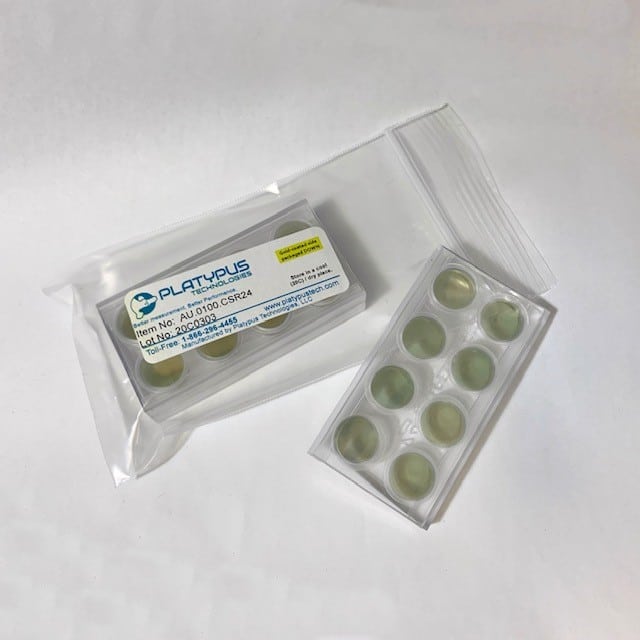Why Choose Gold Coated Coverslips Over PDL Coatings?
Gold-plated coverslips are a form of metal coating. They have an important place in cell culture, microscopy, nanotechnology, and other areas because of their useful optical properties. They are commonly used as a substrate in imaging applications, where cells can be grown and observed under a microscope. To enhance the performance of coverslips, various coatings are available, including Poly-D-Lysine (PDL) and gold. In this article, we will look at the advantages of gold-coated coverslips over PDL and outline their unique features and applications.
What are PDL Coatings?
PDL coatings are commonly used to amend surface charges and improve cell adhesion and spreading in cell culture applications. These coatings change the properties of the coverslip, promoting the attachment of cultured cells. However, due to uneven or crystallized surfaces, PDL coatings may not always provide ideal results for imaging applications.
PDL-coated coverslips come in different specifications to suit various experimental needs. The coating protocol typically involves incubating coverslips with PDL solutions, followed by rinsing and drying. While the cost of PDL coatings is relatively low compared to metal and gold coatings, the coating thickness and uniformity can vary, impacting the overall quality of imaging results.
What are Gold-Coated Coverslips?
Gold-coated coverslips offer distinct advantages over PDL coatings, especially in high-resolution imaging techniques that demand topographical uniformity. These coverslips consist of gold thin films deposited uniformly onto transparent glass or mica, resulting in exceptional optical properties such as selective reflectivity and transmissivity.

The gold coating process involves depositing a thin layer of gold onto the coverslip surface using techniques like sputtering or evaporation. This process ensures a uniform coating thickness, vital for obtaining precise imaging results. Thanks to their unique optical properties, gold-coated coverslips find applications in surface science, protein analysis, microscopy, and spectroscopy.
Comparing PDL and Gold Coatings
When considering the choice between PDL and gold coatings, several factors must be considered: cost, durability, coating uniformity, and thickness.
In terms of cost, PDL coatings are more affordable than gold coatings. However, the durability of PDL coatings is relatively lower, with the coating potentially wearing off over time. Gold coatings, on the other hand, exhibit excellent durability and long-term stability.
Coating uniformity and thickness are critical for obtaining high-quality imaging results. PDL coatings sometimes have uneven or crystallized surfaces, whereas gold-coated coverslips offer outstanding uniformity. Additionally, the thickness of PDL coatings may vary, which can impact the accuracy and reproducibility of experiments, while gold coatings ensure a consistently controlled thickness.
Considering these factors, gold-coated coverslips emerge as the preferred choice over PDL coatings for imaging applications that demand high-resolution and uniform surfaces.
Where Can I Purchase Gold-Coated Coverlips?
At Platypus Technologies, we understand the importance of cutting-edge solutions in scientific research. As a Wisconsin-based manufacturing company, we specialize in surface science, offering various products to empower scientists in various fields.
Our product line includes gold-coated microscope slides, coverslips, chips, plates, and gold-coated chips for Surface Plasmon Resonance (SPR) applications. These products feature high-quality gold coatings with excellent uniformity and controlled thickness. They are ideal substrates for fluorescence microscopy, SPR, and Surface-Enhanced Raman Spectroscopy (SERS), enabling scientists to explore new frontiers in their research.
Contact us today for a quote on gold-plated coverslips or similar products.